
Click the above Computer Enthusiasts to follow us
Although the status of the front camera is rising, the evolution of smartphones towards an almost 100% full-screen design leaves less and less space for accommodating the front lens. How can we solve the trend of higher screen-to-body ratio and the design of screen glass without holes while still enabling selfies? This is a challenge faced by smartphone manufacturers and the entire industry chain.
Achieving More Angles in Photography
As the name suggests, the front camera is for capturing what’s in front, while the rear camera captures what’s opposite. However, sometimes the standard front and rear cameras cannot meet our creative needs. This is where adjustable camera modules come into play.
It is worth noting that rotating cameras are not exclusive to Android smartphones; as early as over a decade ago, this complex structure was already adopted by brands like Nokia and Samsung.

Do you remember the Nokia N90? This phone not only had a rotating screen but also a camera module that could rotate 135 degrees. With a 2-megapixel autofocus lens certified by Carl Zeiss, it was considered a mobile DV at the time, excelling at both selfies and candid shots.

Nokia also introduced the rotating camera concept in mid-range phones, such as the Nokia 5700 and 3250. For example, the 3250 could rotate 270 degrees, automatically activating the camera when the screen was positioned at 90 degrees, thus addressing the needs for front and rear photography. Samsung also had its share, with models like SCH-W579, SGH-X608, and SGH-D828 representing rotating cameras.

The Show of Rotating Cameras
With the advent of the Android era, the concept of beauty enhancement began to rise. However, early front-facing cameras generally had low quality, and even the best beauty algorithms could be hampered by sensor limitations. Using the rear camera for selfies not only solves the image quality issues but also utilizes the rear flash for additional lighting, providing numerous benefits.
So, how can this be achieved?
OPPO was the first to provide an answer. In September 2013, OPPO launched its first N series phone, the N1, featuring a camera that could rotate 206 degrees. Internally, it consisted of 10 modules, 50 connecting wires, and 67 parts, allowing it to be fixed at any shooting angle, enhancing the selfie experience while also facilitating upward and downward shots, earning widespread acclaim that year.
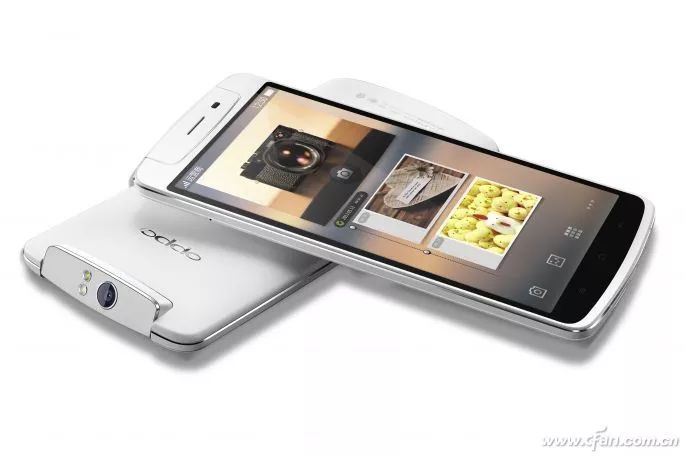
In 2014, OPPO successively launched the more compact N1 mini and N3, with the former being more suitable for smaller hands, while the latter featured an electric camera. Compared to the N1, the N3 could control the camera’s rotation directly via screen swiping, significantly enhancing its functionality. For instance, using the electric motor to capture panoramic photos could completely eliminate issues of hand tremors, and it could automatically “turn” back during calls, preventing inconvenience from forgetting to reset.
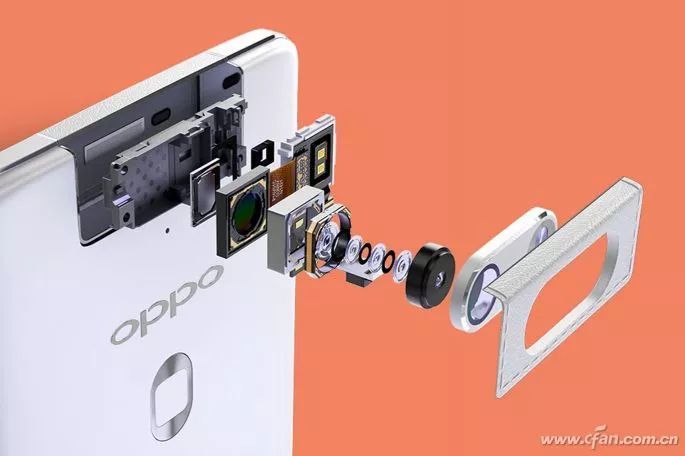
Besides OPPO, brands like Doro and Honor have also launched similar products. Doro introduced the V1 in November 2014, while Honor brought the Honor 7i in August 2015. These products did not adopt the complex rotating module of OPPO’s N series but instead used a pivot to flip the rear lens upwards, thus addressing the needs for front and rear photography, as well as shooting from other angles.


Unfortunately, rotating cameras require separate pivots and other complex components, taking up considerable space. In an era where smartphones generally pursue screen-to-body ratios and the “full-screen” concept has become a consensus in the industry, front cameras face unprecedented challenges.
Gradually Compressing Living Space
Xiaomi proposed the “full-screen” concept with the launch of the first generation MIX. To achieve a design with no bezels on three sides, this series had to move the front camera and other units, like the light and distance sensors, from the “forehead” to the “chin.” Due to the complexity of the screen wiring and RF antenna components at the bottom of the phone, the space left for the front lens became even more cramped.
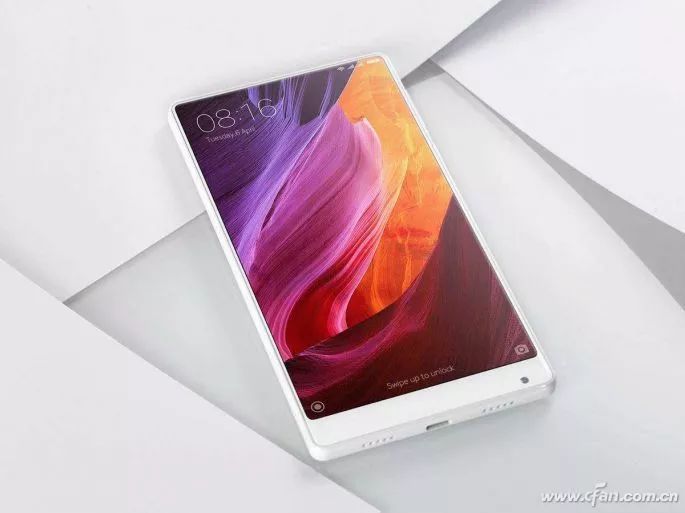
Take Xiaomi’s latest MIX2S as an example; this flagship phone armed with Snapdragon 845 still has a front camera at a mere 5 million pixels. Whether in terms of pixel count or the details of beauty selfies, it lags behind its siblings like the Xiaomi 8. Teardown reveals that the front camera of the MIX2S is smaller than 1/4 of the rear camera, and its quality can be anticipated.

In fact, it’s not just Xiaomi; whether it’s Apple’s iPhone X or other phones with notch or teardrop designs, they all face the issue of not having space to accommodate higher-end front camera sensors.
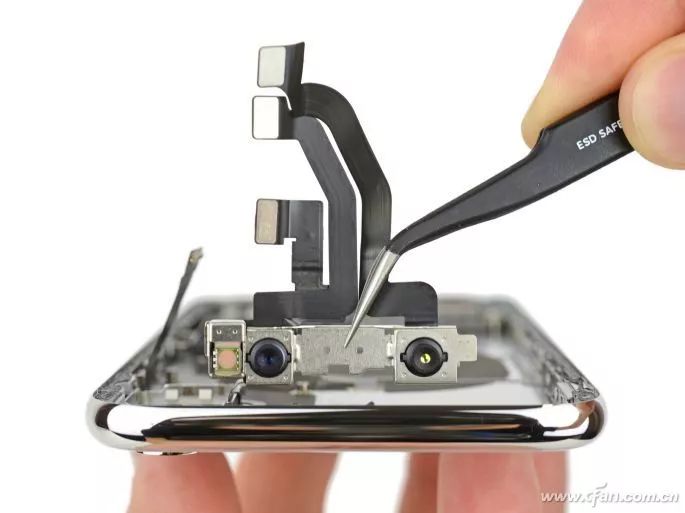
The 3D structured light module further encroaches on the living space of the front camera.
For example, the Jiguang R1, while having a front camera of up to 24 million pixels, cannot expect to achieve imaging standards comparable to the rear lens due to the sensor size.
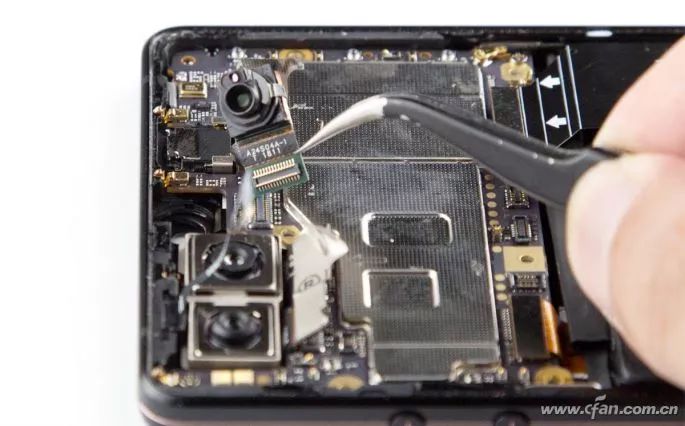
The front lens is clearly two circles smaller than the rear lens.
So, is there no case where the front camera outperforms the rear camera? The answer is yes. For instance, the Meitu T8s is a typical example where the front camera is superior to the rear camera.
In simple terms, the T8s has a 21 million pixel IMX230 sensor for the rear camera, while the front uses a combination of a 12 million pixel IMX362 sensor and a 5 million pixel Samsung 4E8 sensor, surpassing many high-end phones’ rear dual cameras from that period in terms of quality.
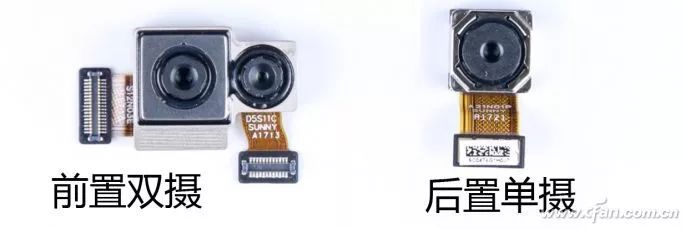
Comparison of front and rear camera modules of the Meitu T8s.
Unfortunately, to accommodate a higher quality front camera, the Meitu T8s retains a very noticeable “forehead,” a design style that stands out in the era of full screens and is not widely accepted by consumers.
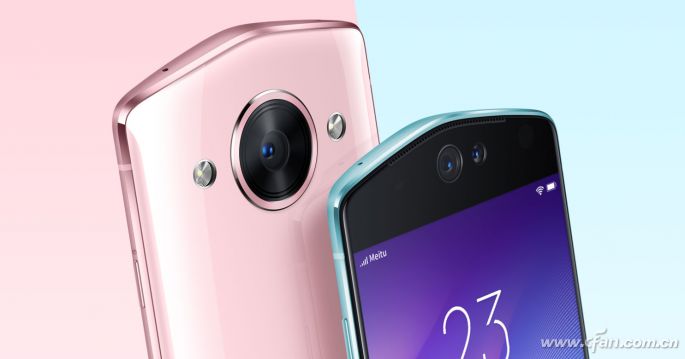
In the era of full screens, especially with designs approaching 100% full screen, where is the way out for the front camera?
A Glimmer of Hope Appears
In pursuit of a higher screen-to-body ratio, smartphones gradually transitioned from 18:9 full screens to 19:9 notch screens in 2018. However, whether it’s the notch of iPhone X, Honor 10, and Xiaomi 8 or the teardrop of Sharp S2 and Jiguang R1, they all affect the visual impact of the phone’s front, impacting aesthetics and occupying notification space.
Thus, a physical structure with a pop-up feature has become the best solution for housing the front camera in full-screen phones. The first to break through this ceiling is the latest flagship from vivo and OPPO.
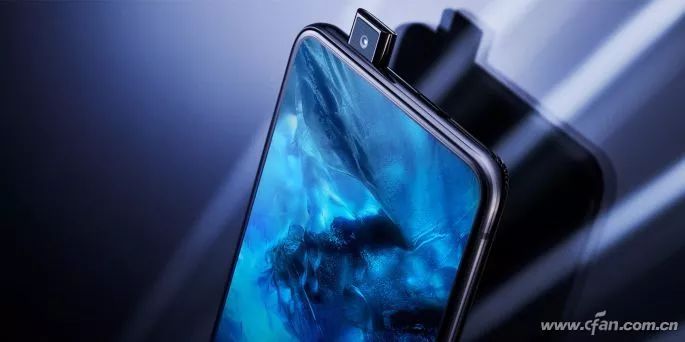
The pop-up front camera module of the vivo NEX consists of a stepper motor, a reduction gearbox, and a lead screw. Each rise and fall relies on the torque generated by the stepper motor, magnified by the precision gearbox to turn the lead screw, thus allowing the front camera to rise for shooting and retract for storage.
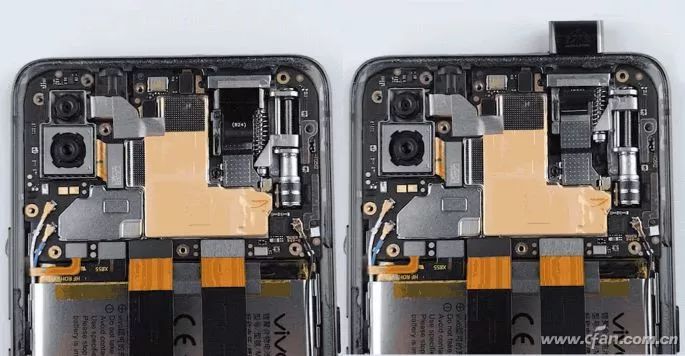
To enhance reliability, the vivo NEX also integrates a Hall magnetic sensing switch in the camera module, which can automatically retract the lens upon sensing external force. Additionally, this pop-up lens can operate without failure for 50,000 rises and falls, and the stainless steel casing can withstand strong tensile and torsional forces, ensuring a lifespan of 3 years with an estimated 50 pops per day.
Unfortunately, the pop-up module occupies more space than a simple sensor, and even though vivo NEX optimized the PCB layout and placed the SIM card slot at the bottom, the space left for the pop-up front camera is still limited, resulting in a pixel count of only 8 million, which is far less than the dual-focus sensors supported by predecessors like the X20/X21.
OPPO Find X also adopts a similar approach to NEX, but it utilizes a more complex dual-rail periscope structure, hiding the IR fill light, IR camera, proximity sensor, earpiece, dot projector, front camera, and rear dual cameras within a retractable frame, achieving a visual effect with no holes on both sides of the device.
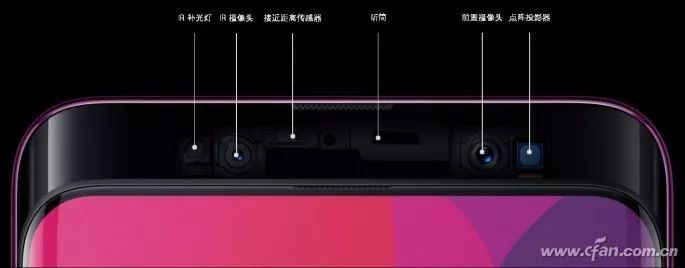
It is reported that the motor in the Find X’s dual-rail periscope structure raises and lowers via a threaded shaft, similar to the motor controlling the laser head in a CD drive, with a lifespan of 300,000 cycles and special design to avoid damage from accidental drops, retracting the periscope structure quickly upon detecting a fall to ensure safety.
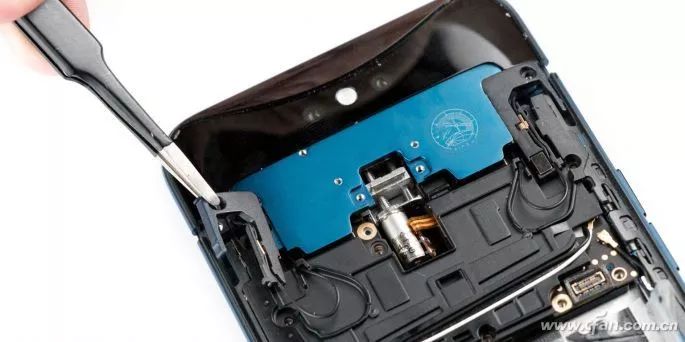
Due to the ample space in OPPO Find X’s dual-rail periscope structure, it can accommodate a 25 million pixel IMX576 sensor, ensuring better quality for selfies.
In comparison, the pop-up camera module technology of vivo NEX is the most mature. According to industry chain news, more new products will introduce this design, leading to flagship phones with screen-to-body ratios exceeding 90%. However, how to resolve the limitation of pop-up modules not being able to accommodate higher-end sensors? This will have to rely on so-called AI beauty algorithms, and the effectiveness will depend on the actual phone model’s algorithm quality.
So, aside from these complex mechanical modules, are there no other solutions?
Hope from Dual Screens
Let’s revisit the Meizu Pro 7 launched last year, which featured a secondary screen on the back for composing shots with the rear camera when taking selfies. Since the rear camera can use the back screen for composition, it effectively replaces the role of the front camera.
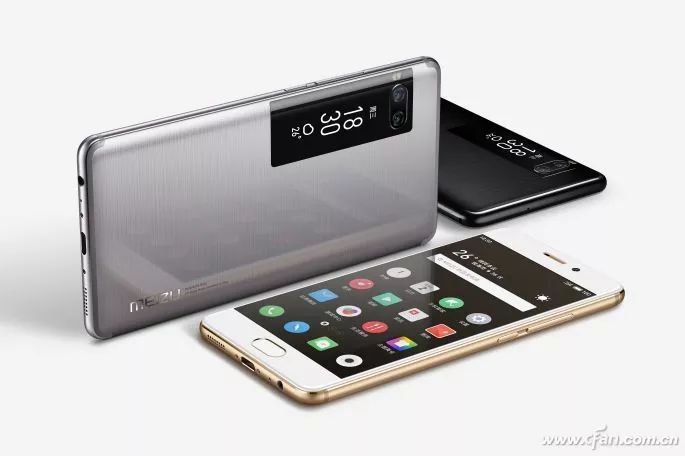
Recently, foreign media uncovered a patent filed by Samsung in the US (submitted in September 2017, published on June 19, 2018), which outlines an improved version of this dual-screen design. From the patent drawings, Samsung’s concept device boasts over 90% screen-to-body ratio, completely eliminating the chin, with only the earpiece and sensors at the forehead, leaving no room for the front camera.

The back of this product features a secondary screen occupying 2/5 of the rear cover. When taking selfies, the back screen will automatically activate to achieve composition, using the sole rear camera for the shot. This setup also accommodates video calls and other scenarios requiring front camera participation. Additionally, if this secondary screen can be used for light applications like reading e-books or notifications, it could also be more power-efficient.
Moreover, smartphones equipped with flexible OLED screens and a foldable structure are no longer just concepts; these products inherently possess dual-screen forms, allowing a single camera to meet both front and rear photography needs.
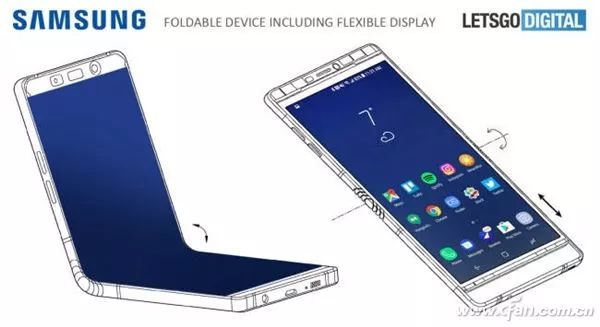
The ZTE AXON M can be seen as a precursor to such products. With a flexible screen design, foldable phones will achieve a more aesthetically pleasing integrity while pursuing higher screen-to-body ratios.


Click “Read Original” for more exciting content.